Did you know...?
¬ There were more than 5,300 plans and drawings for the
Tower
¬ The Tower was built in 2 years, 2 months and 5 days, from
1887 to 1889. It was an instant financial success.
¬ There were 18,000 components, made by 100 ironworkers
off-site, then assembled by 130 workers on-site.
¬ It measures 410 feet (125 m) on each side and stands
1,024.5 feet (312.27 m), and weighs 9,500 tons
¬ The tower sways only 4.5 inches at the top.
¬ For many years, the Tower was the world’s tallest structure
with a safety elevator designed by Otis
¬ Not one fatality occurred during construction.
¬ Guy de Maupassant, Alexander Dumas, Emile Zola, and
other luminaries signed a petition objecting strenuously to
the Tower
¬ Eiffel also designed the iron framework inside the Statue of
Liberty.
“We, the writers, painters, sculptors, architects and lovers of the
beauty of Paris, do protest with all our vigor and all our indignation, in the
name of French taste and endangered French art and history, against the
useless and monstrous Eiffel Tower.” Clearly, initial reaction to the Tower
was mixed, as evidenced by this quote from a petition presented to the
government of the City of Paris. The petition was signed by—among others—
Guy de Maupasssant, Alexander Dumas, Emile Zola, Charles Gounod, and
Paul Verlaine.
Paris’s soaring, open-lattice, wrought-iron Eiffel Tower, originally
built for the International Exposition of 1889 commemorating the centennial
of the French Revolution, remains a universally recognized symbol of France,
and indeed all Europe. Over 700 proposals had been submitted by architects,
engineers, sculptors, and artists. One was selected unanimously, the design by
Gustave Eiffel.
The tower became an instant icon, the site of many romantic moments,
as well as staggering feats of individual bravado. In 1923, the man who would
become Mayor of the district of Montmartre showed his derring-do by
bicycling down the tower using its legs as a ramp! In 1954, a mountain
climber scaled its height, and in 1984 two English chaps parachuted from the
top.
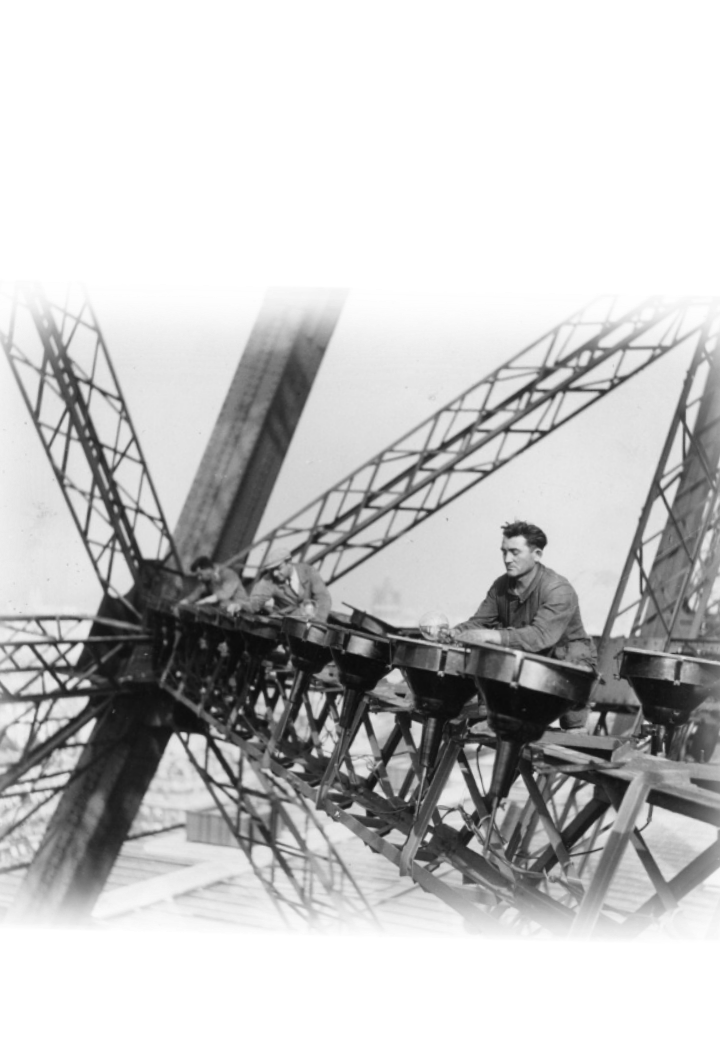
HISTORY
The plan for the tower was submitted to the design competition by the
civil engineer Gustave Eiffel (1832-1923), already well-known for such works
as the arched Gallery of Machines for the Paris Exhibition of 1867, the dome
for the Nice Observatory, a harbor in Chile, a 541-foot arched bridge in
Garabit, France, a pre-constructed spanned bridge in China, and an iron bridge
at Bordeaux (the construction of which involved the first use of compressed
air to drive piles). Eiffel’s viaduct over the Truyère, which stretched 1,850
feet (564 meters), with a central arch span of 541 feet (165 meters),
constituted an engineering record: with a height of 400 feet (122 meters) over
the river, it was for years the world’s highest bridge.
While Eiffel receives all the credit for the tower, it must be noted that
the original conception for the 1889 exposition tower came from two
engineers at Eiffel’s firm: Maurice Koechlin and Emile Nouguier. It took
years of work by more than fifty engineers and designers to prepare the
approximately 5,300 plans and drawings for the tower.
Reproduced here is the official agreement of January 8, 1887, which
outlines Gustave Eiffel’s construction and operation of the tower. In addition
to Eiffel, it was signed by Commerce and Industry Minister, Edouard
Lockroy, who, as commissioner general of the Exposition, organized the
design competition, and by Eugène Poubelle, prefect of the Seine.
Once approval was given, the project proceeded at a rapid pace.
Excavation commenced on January 26, 1887, and assembly of the metal
structure on July 1. The tower’s 18,000 component parts were made by more
than 100 ironworkers at the workshops of Eiffel’s company in the outskirts of
Paris, and were assembled by more than 130 workers at the exposition site.
The exposition was scheduled to open on May 6, 1889. Contrary to the
expectations of many observers, Eiffel easily fulfilled his commitment to
complete the project on schedule, finishing on March 30, 1889. In a ceremony
the following day, a small group of dignitaries accompanied Eiffel to the top
where he raised a huge French flag with the letters “R. F.” (République
Française), and was awarded the Legion of Honor.
The tower rises from a square base measuring 410 feet (125 meters) on
each side, to a height of 1,024.5 feet (312.27 meters) (even higher today
because of the addition of broadcasting antennas). Until the completion in
1930 of New York City’s Chrysler Building, the Eiffel Tower had been the
tallest man-made structure in the world. Despite its immense height, the tower
weighed approximately 9,500 tons, with the metal framework accounting for
7,300 tons. Because of its cross-braced, latticed structure, wind had little
impact on its stability.
The Eiffel Tower was an immediate success. Construction costs, said
to be approximately 8 million gold francs, were quickly covered by receipts
earned from visitors. By the time the fair closed in early November 1889, two
million people had visited the tower. By the end of that year, receipts totaled
5.9 million gold francs. As of 2002, the total number of visitors to the tower
had exceeded 200 million.
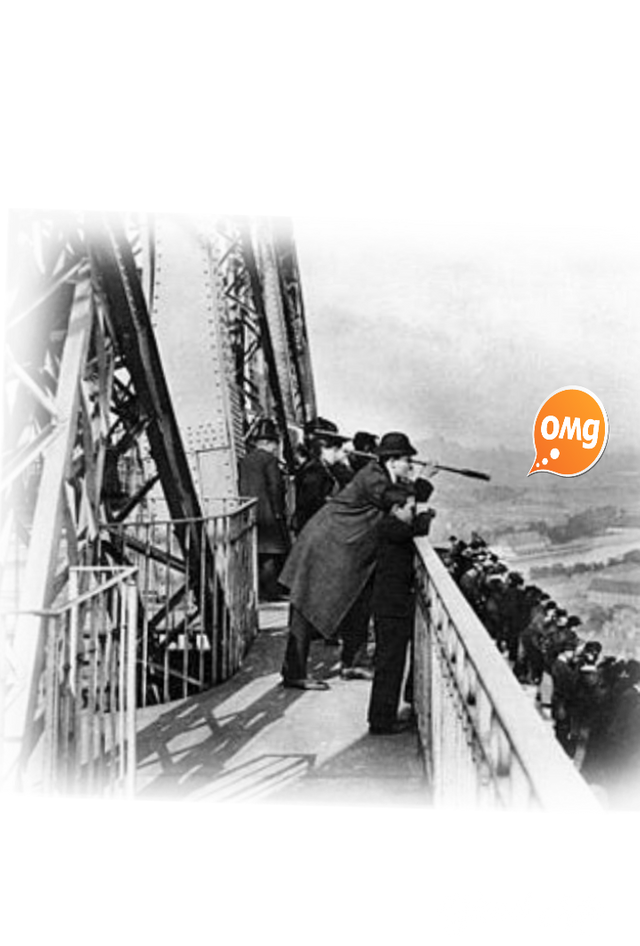
CULTURAL CONTEXT
France is the country that coined the phrase Les Grands Travaux
(Large-scale Engineering Works). In a French encyclopedia, an article on Le
Canal des Deux Mers (The Canal of the Two Seas) states that the Canal was
the greatest public work since the time of the ancient Romans. Thus, Eiffel
was in the authentic tradition of Les Grands Travaux. Perhaps the world’s
greatest artist in the medium of iron, Eiffel also wrote a book entitled
L’Architecture Métalique.
He attended the Ecole Centrale, a school for the arts and
manufacturing. But if his school prepared him for art, he also participated in
its manufacturing mission, as Eiffel continued to design projects using iron—
railway viaducts with supports of iron, and a bridge over the Douro River in
Portugal. He decided to open his own factory just outside Paris in the town of
Levallois-Perret. This combination of artistry, experience with iron, his own
manufacturing and production facilities, and extensive business management
experience enabled Eiffel to be one of the first macro-engineers to complete
his great work not only within the prescribed budget but ahead of the
estimated schedule.
While France was the nexus of great engineering works, it may have
been Eiffel’s experiences in the United States that sparked his the idea for the
tower. In 1876, he saw a proposal by two Americans, Samuel Fessenden
Clarke and Arthur M. Reeves, who had designed a circular iron-framed tower
intended as an engineering monument and icon for the Centennial Exposition
of 1876. Clarke and Reeves’ design was included in the 100th anniversary of
the American Revolution—a fact that may have influenced Eiffel as he
considered a piece for the 100th
anniversary of the French Revolution. Eiffel
himself credited Clarke and Reeves as the source of his inspiration.
Eiffel’s design took advantage of new materials with which architects
and engineers were beginning to become familiar. Before this time, Les
Grands Travaux were large in the sense of wide and long, and often based on
stone construction—canals, aqueducts, bridges; they were not especially high,
except of course for the famous medieval cathedrals. Eiffel’s monument is a
marvel of physics. He was a pioneer in the aerodynamics of high frames,
using a mathematical formula to determine the exact curve of the structure’s
base that would withstand the force of the wind against it and transform that
force into added structural support. It is noteworthy that the Eiffel Tower
sways only 4.5 inches at the top. The exact math of Eiffel’s discoveries can be
found in his 1913 work, The Resistance of the Air. Eiffel’s physics paved the
way for the modern skyscrapers erected in recent years.
The tower’s height is an important factor in its endurance. Although
the contract set twenty years as the length of time the tower would remain in
the Parisian park, the Champs de Mars, when the contract expired, the tower’s
height made it the obvious choice for siting communication antennae. So it
remained in the park—to send telegraph signals.
Eiffel saw the advantages of adding communication antennae to the
tower. When the first radio signals were sent by Eugène Ducretet in 1898, it
was Gustave Eiffel who approached the military in 1901 and suggested that
the tower be incorporated into an infrastructure for long-distance radio
communications. By 1903, radio signaling had made major progress, and the
military was sending messages from the tower to bases around Paris, and by
1904 to the French east coast. A permanent radio station was installed in the
tower in 1906. In 1910, its antenna became part of the International Time
Service. Ever an enthusiast for the modern and new, Eiffel was gratified when
the first European public radio broadcast came from the tower in 1921, just
two years before his death. It would have pleased Eiffel that in 1957 television
signals were added; no doubt he would approve of the web cam that today
allows people from all over the world to see vistas from the Eiffel Tower via
the Internet.
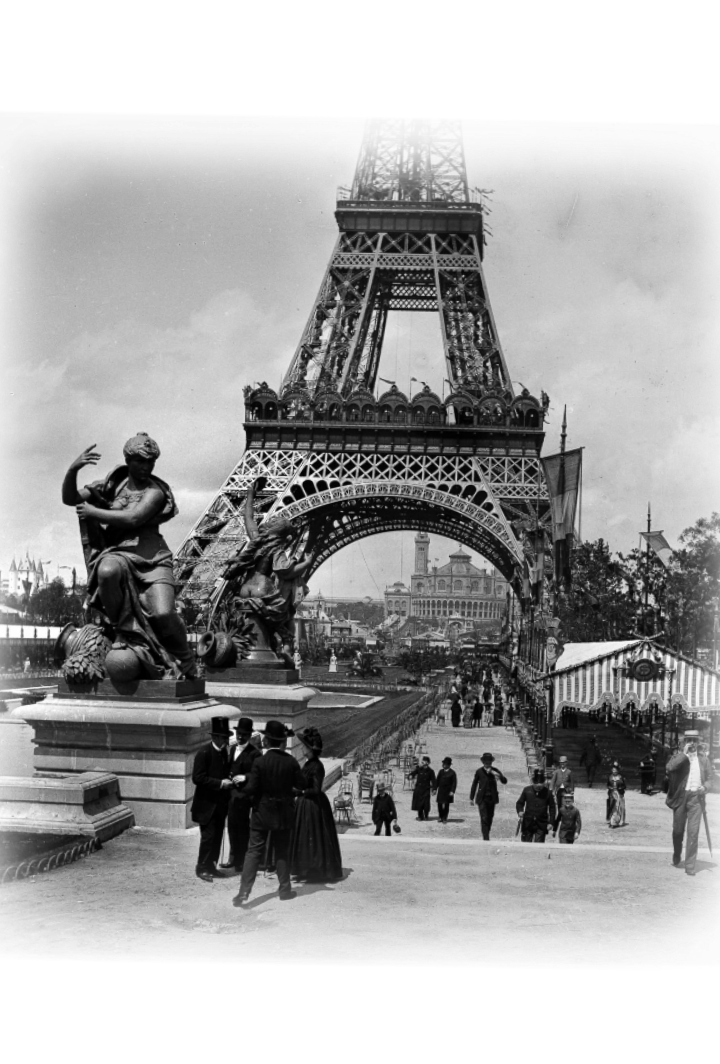
PLANNING
The Eiffel Tower was perhaps more carefully and meticulously
planned than any macro project in history—and all the planning was done by
Eiffel himself. In fact, planning may have taken longer than building. As a
result of such fastidious preparation, the project was finished ahead of
schedule. In just two years, two months, and five days, Eiffel and his team
successfully accomplished this engineering feat with such perfection that the
individual pieces were tooled to an accuracy of one-tenth of a millimeter.
It took tremendous planning to foresee that most of the parts would
have to be forged, machined, and assembled off-site and then installed.
Workers at Eiffel’s factory at Levallois-Perret made the parts; many had
previous experience working on Eiffel’s viaducts.
The on-site work crews required special organization. Teams of four
men were needed to install each rivet: one held the rivet in place, one heated it
red-hot, a third made sure the head of the rivet was positioned exactly right,
the fourth hammered it into place. Eiffel had planned the process with such
precision that the hot rivets could cool right in place, expand as they cooled,
and thereby strengthen the structure by taking advantage of natural
thermodynamic principles.
The Eiffel Tower was one of the most meticulously planned and best-
managed macro construction projects in history.
BUILDING
The tower was constructed of iron and held together by 2.5 million
rivets, all resting on a masonry base. The foundation was made of caissons
filled with concrete and sunk into the ground; these were 50 feet long, 22 feet
wide, and 7 feet deep. The tower consisted of two platforms and a laboratory
at 896 feet for Eiffel’s use. All sections of the tower were prefabricated; seven
million holes were drilled off-site, and remarkably there were no significant
difficulties with on-site assembly.
The precision of the planning shows up in the contract presented here.
For instance, one curious but highly specific detail is the reference in Article
2: “Widow Bourouet-Aubertot, owner of the hotel on the avenue de la
Bourdonnaye, 10.” The widow had approached the Prefect of the Seine
threatening to require demolition of the Eiffel Tower, which was in the midst
of construction. The contract states: “The aforementioned widow has
withdrawn a provisional execution of a judgment to intervene.” That settled
the matter, and in the process made the Widow Bourouet-Aubertot forever
famous or infamous. Her story is just one of many complaints from abutters,
interested parties, affected parties, and others whose viewpoints Eiffel had to
confront.
Article 3 of the contract is noteworthy for more substantive reasons. It
addresses park landscaping, which would be disturbed by the tower
construction. The contract stipulates that Eiffel will be responsible for any
plantings moved, and “will support the costs of removal by the gardeners of
the city the trees, bushes, and plants that must be displaced.” Note that the
city’s gardeners would do the work, not a work crew of riveters.
Another concern in Article 3 was: “Mr. Eiffel will not cause any
changes to the hydrants, sewer drains, or water pipes situated in the Garden of
the city.” Here we learn of the exquisite city planning for Paris, which located
a water source under the park. There are two advantages to such a placement.
First, the water pipes could be used to assist in irrigation of the plantings.
Second, the pipes are located beneath a surface that is subject to little
vibration except running children; hence there would be few disturbances to
the critical infrastructure of the Parisian water system. Gardeners and students
of Indian architecture might recall that the Taj Mahal used a similar design,
locating water pipes under the gardens.
Les Egouts (the sewers) of Paris remain a tourist highlight, with an
entrance beneath one of the bridges crossing the Seine. The sewer was
designed during the administration of Haussmann, Napoleon III’s famous
Prefect of the Seine. Paris had been one of the unhealthiest cities in the world,
assailed by repeated epidemics. Haussman insisted on cutting wide avenues
that provided fresh air, thereby opening up narrow streets that had remained
unchanged since medieval times.
Another portion of the contract presented here provides specific
guidelines for the use of the Eiffel Tower in case of war. In Article 8, Eiffel is
instructed: “In order to facilitate scientific or military purposes or use, Mr.
Eiffel will reserve on each floor a special room which will remain free for the
disposition of persons designated by the Minister of the General
Commission.” In a note of finesse, it is added that said Minister will get 300
free admissions per month and the admissions can use the elevators.
Eiffel Tower 8
Article 13 requires that in times of war or a state of siege, the
government will have the right to use the tower, perhaps for its vantage point
as a lookout, but more likely for sending signals. The contract is meticulous in
outlining how Eiffel will be repaid for time lost during military use, and
provides that “the term of concession will be extended one year for every
period of three months or fraction of three months during which the
suspension occurs.”
A discussion of the construction of the Eiffel Tower is not complete
without consideration of the elevators. Never before had ascenseurs risen to
such heig
Article 13 requires that in times of war or a state of siege, the
government will have the right to use the tower, perhaps for its vantage point
as a lookout, but more likely for sending signals. The contract is meticulous in
outlining how Eiffel will be repaid for time lost during military use, and
provides that “the term of concession will be extended one year for every
period of three months or fraction of three months during which the
suspension occurs.”
A discussion of the construction of the Eiffel Tower is not complete
without consideration of the elevators. Never before had ascenseurs risen to
such heights. The French company Roux, Combaluzier and Lepape built the
first elevators, which carried passenger to the first platform by means of
hydraulics, utilizing a double-looped chain for extra safety. In 1897, those
elevators were replaced by equipment from the French firm Fives-Lille; these
lasted 90 years until they were improved in 1987. But even the Fives-Lille
company only had the technical know-how to bring the elevators to the first
level.
How could visitors get further without climbing the endless stairs
upward? This was a task for the world’s best-known elevator man, Elisha
Graves Otis. In 1853, Otis introduced the world’s first safety elevator in
Yonkers, New York. From that point on, buildings could rise beyond the
limitations of stairs. In one of his greatest works, Otis designed elevator
cabins as two-decked rooms mounted on sloping runners and pulled by a cable
that was powered by a hydraulic piston.
The piece de résistance was the vertical lift designed by Leon Edoux
to bring visitors to the top of the tower. Passengers changed cars halfway up,
as only one car could continue upward, counterbalanced by the other going
down, in a design not unlike a water clock and similarly powered by water
tanks that helped provide the hydraulics. Of course, Edoux’s ingenious
engineering did not work in the winter when frozen water in the tanks made
operations impossible until the spring thaw. Edoux’s marvelous invention
operated until 1983 when technology had advanced sufficiently to offer a
replacement.
At his own risk—and his own profit—Eiffel was free to conduct the
construction in any manner he chose. He also was given the right to fix the fee
for admission to the tower: higher on weekdays than on weekends. In return
for these allowances, and for the right to lease and collect rents from the shops
and cafés associated with the tower, Eiffel was required to pay 1,000 francs to
the Exposition Commission. Eiffel was also legally bound to pay the City of
Paris for rental of the land on which the tower was built—a nominal 100
francs per annum
The contract for building the Eiffel Tower contains insurance
provisions, a feature lacking in many other contracts of similar vintage. Eiffel
was required to put aside one percent to cover potential expenses for sick or
wounded workers. In addition, Eiffel was bound to set aside a reserve fund to
deal with accidents. It should be noted that there were no fatalities during the
course of the construction—a tribute to Eiffel’s well-orchestrated planning.
The one recorded death of a workman occurred off site and off duty.
Like his fellow engineer/entrepreneur, John Roebling, who built the
Brooklyn Bridge in the United States using steel ropes manufactured in his
own factory in New Jersey, Gustave Eiffel built the Eiffel Tower six years
later utilizing a similar management process: coordination of on-site work
with ongoing construction being prepared in his own nearby factory. Both of
these mechanical engineers were not just designers but also business owners
and managers—Eiffel was Mr. Iron, and Roebling was Mr. Steel. Both built
structures higher than had ever been done before.
The tower bears the names of 72 of France’s greatest technical minds,
18 luminaries on each of the four sides of the base. For most French people,
however, one name is mentioned even more frequently than Eiffel’s:
Monsieur Poubelle, the Prefect of the Seine, who signed the contract featured
here on behalf of the government. M. Poubelle is the inventor of the garbage
pail, which is still used all over Paris and France. The ubiquitous receptacle is
actually called a poubelle.
IMPORTANCE IN HISTORY
What distinguishes the Eiffel Tower is not just its beauty or
symbolism. Like the Colossus of Rhodes, it was a technological marvel of its
time, pushing the limits of existing engineering knowledge. It is a little known
fact that Eiffel helped build the Statue of Liberty in New York harbor. In
1885, he worked with Frederic Bartholdi to create the wrought-iron pylon
inside the statue.
Eiffel was duly recognized for his tremendous achievement. On the
200 franc banknote (the currency of France before the adoption of the euro in
2002), there was a depiction of Gustave Eiffel and on the reverse side, the
Tower. It is a distinction afforded few engineering projects, and a sign of his
place in French history. Even in France today, the top of the social hierarchy
is not, as some might imagine, painters, designers, or aristocrats, but instead it
is engineers.
While standing at the top of his completed monument, Gustave Eiffel
proudly received the Legion of Honor, inducting him into that elevated society
that has given special distinction and national renown to France.
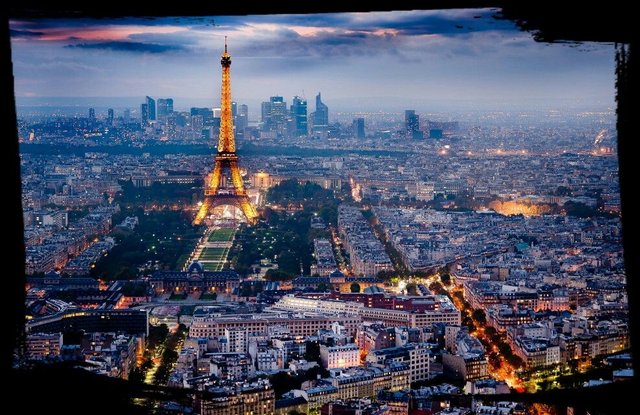
The Eiffel Tower has made such an impression on the world that it
was especially honored in Shanghai, China in a cultural exchange featuring
the Oriental Pearl TV Tower, built for telecommunications, and one of the
world’s highest buildings (468 meters or 1535 feet).
Eiffel continues the tradition of Les Grands Travaux as a worthy
successor to Pierre-Paul Riquet (the Canal des Duex Mer), Ferdinand de
Lesseps (the Suez Canal), French-born Isambard Kingdom Brunel (the RMS
Great Eastern and the Thames Tunnel), and more recently Louis Armand
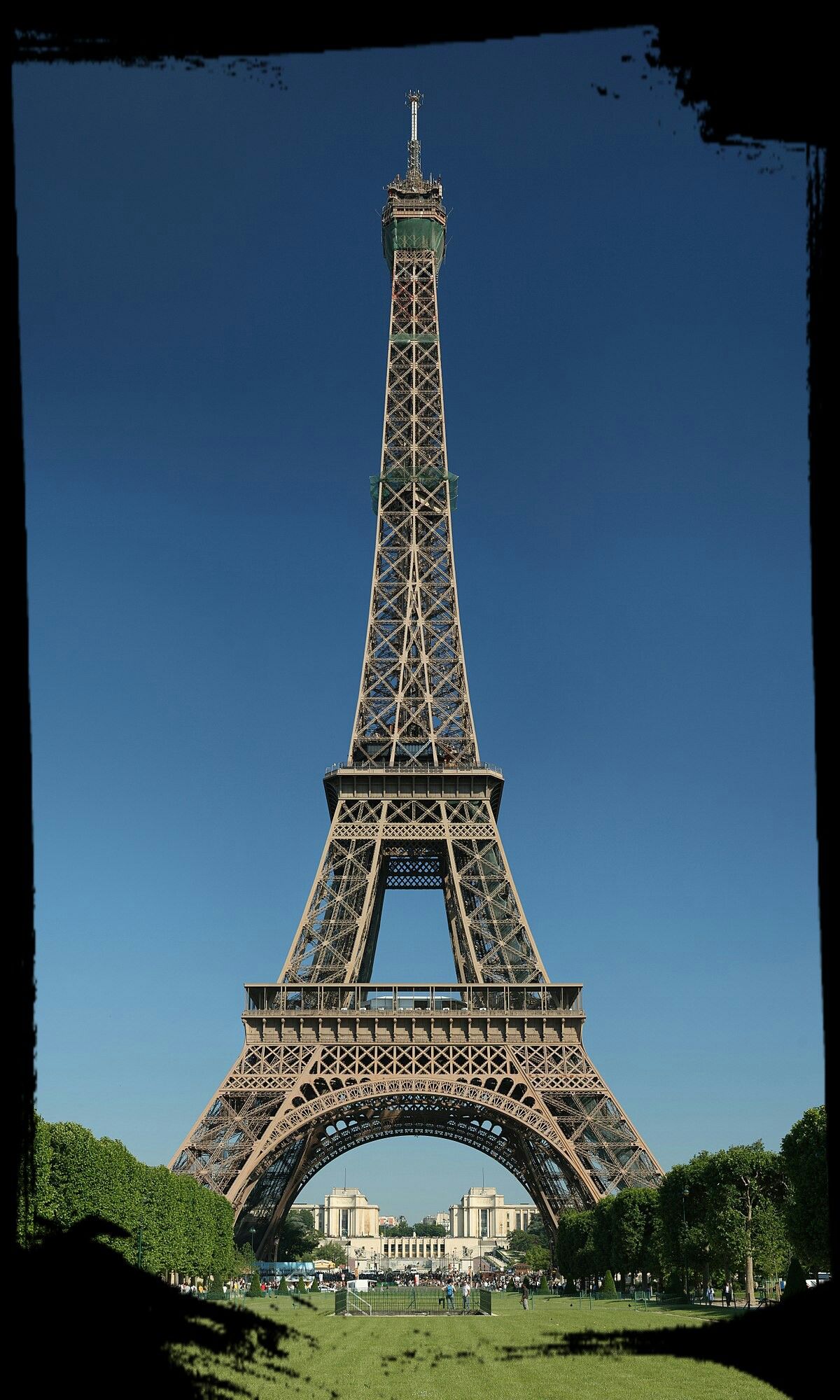
Thanks for the nice article! I'm living 10 min from the Eiffel Tower, but didn't know most of what you wrote!
Downvoting a post can decrease pending rewards and make it less visible. Common reasons:
Submit
thank you so much for watch my blog
Downvoting a post can decrease pending rewards and make it less visible. Common reasons:
Submit
Hi! I am a robot. I just upvoted you! I found similar content that readers might be interested in:
https://www.amazon.ca/Hitler-Paris-Photograph-Shocked-World/dp/075654789X
Downvoting a post can decrease pending rewards and make it less visible. Common reasons:
Submit
I have already delete this
Downvoting a post can decrease pending rewards and make it less visible. Common reasons:
Submit
Congratulations @nazmul8877! You have completed some achievement on Steemit and have been rewarded with new badge(s) :
Click on any badge to view your own Board of Honor on SteemitBoard.
For more information about SteemitBoard, click here
If you no longer want to receive notifications, reply to this comment with the word
STOPDownvoting a post can decrease pending rewards and make it less visible. Common reasons:
Submit